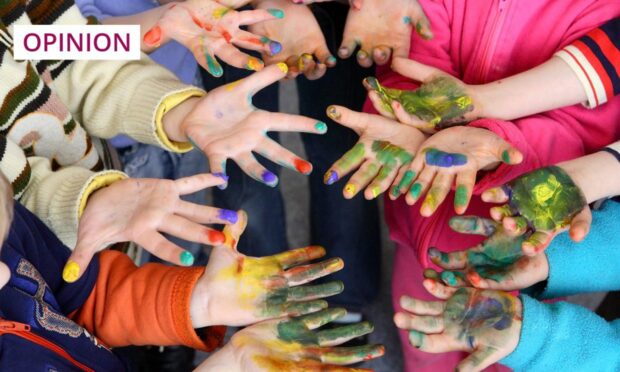Around one in four children and young people live with a painful chronic health condition.
Almost a third who take their own lives have a physical illness. A quarter of those aged 11 to 19 who live with a mental health disorder also have a life-limiting illness. Access to appropriate health services is patchy.
This is the context in which Teapot Trust delivers art therapy free of charge to young patients – including at Raigmore in Inverness and Aberdeen Children’s Hospital.
Typically, children struggle to accept a diagnosis and adhere to a regime of treatment. They might carry trauma from medical interventions and invasive tests. They feel misunderstood because their illness is “invisible”, and others don’t understand that they’re in pain. It’s hard for them to process this and speak about it.
Art therapy puts the brain in a “flow” state, which means that issues emerge more readily, enabling coping tools to be explored. It can be transformational. This work is not usually NHS-funded, but Teapot Trust has a vision of a future where any child or young person living with the pain and stigma of chronic illness can access impactful art therapy without barriers or cost.

Sadly, recent statistics reveal the extent of health inequalities in Scotland. Wealth disparity means that there is a 200-fold difference between the 10% of households at each end of the spectrum, and child poverty is on a slow but persistent upward trend. This is deeply concerning, because asthma, diabetes, cystic fibrosis, epilepsy and sickle cell disease are all more prevalent in children in areas of multiple disadvantages.
The January 2023 Health Foundation Report, called “Leave No One Behind: The state of health and health inequalities in Scotland” highlights that the policy framework on health is adequate, but there is an “implementation gap” that requires those working in the health sector to partner imaginatively to overcome health inequalities, deliver good outcomes, and share with others what has worked well.
Giving suffering children a place of escape
Meeting needs where they’re felt profoundly is a key commitment that we’re working with 25 partners around the country to achieve. In the north of Scotland, innovations with Raigmore Hospital have included the development of online art therapy, successfully rolled out nationally at the outset of the pandemic. This has been vital to people in rural and remote locations.
Family art therapy was developed with Raigmore to help families navigate their health journey. This is important where families feel they are in “survival mode”.
In Aberdeen, where we’ve worked long-term, we’re currently reintroducing small art therapy groups into pediatric clinics and expanding our provision.
Nationally, to reach more families in need and to improve public understanding of chronic illness, we’ve created “The Elsewhere Garden” with respected garden designers, Semple Begg. It will be a show garden at RHS Chelsea in May.
🌷 Spring is here, & we have entered #RHSChelsea Flower Show season.
We are so excited for everyone to join us on this journey as the #TeapotTrustElsewhereGarden comes to life. All plants & features have been carefully chosen to tell the story of the young patients we support. pic.twitter.com/6LMFZC6I0m— Teapot Trust (@TeapotTrust) March 25, 2023
The garden is an imagining of a child’s mind, set free from the burden of chronic illness, representing the freedom art therapy gives. Inspiration came from Wonka, Oz and Wonderland – where colour is vivid and form is exaggerated. Visitors will be immersed in rich planting, art sculptures, water features and soundscapes created by award winning artists Kathy Hinde and Michael Begg. We’re excited to be working with such talented creatives.
Another thrill is working with Scottish Tech Army and Edify to produce a virtual reality version of the garden that hospital in-patients will be able to enjoy. They’ll have a bee’s eye view of flowers, and hear the sounds below ground and in the trees. A multi-partner initiative marked by generous philanthropy, together we will achieve something wonderful for children struggling with illness to take their minds to a place of escape.
The garden’s permanent home will be at the Royal Hospital for Children in Glasgow (serving areas of significant disadvantage where chronic illness is higher), where it will be used for outdoor art therapy. This means that children won’t need to be in a clinical environment that many find scary.
We will share our learnings through our biennial conference later this year – freely available to all who work in children’s health and care.
Sarah Randell is CEO of Teapot Trust

Conversation